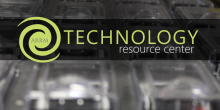The Implementation
From initial conversations to building a plan tailored to the individual, members of the team have all weighed in to come up with a plan for utilizing technology solutions that will best support the person served. With funding secured, the time has now come to put that plan to work.
Implementing technology supports to fulfill an individual's support plan involves not only setting up the physical technology infrastructure, but the training of all individuals involved as well—providers (staff, managers), case managers, families, and self-advocates. This will help ensure all involved are comfortable using the technology and understand the support and response procedures in place.
Select below to begin the implementation process from the perspective that matches your interests.

Providers
Learn how to train staff and persons served to use technology supports.

Family & Self-Advocates
Learn what is needed from family/self-advocates during implementation.

Case Managers
Review support plan and advise during implementation process.




